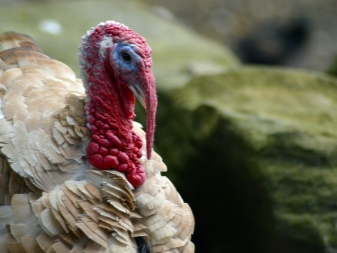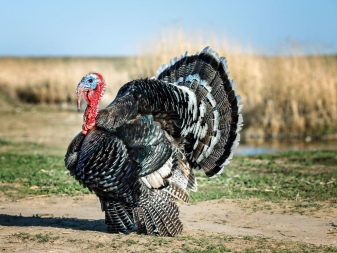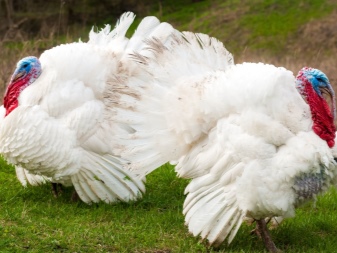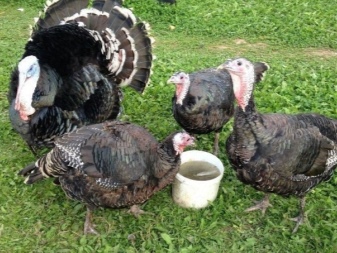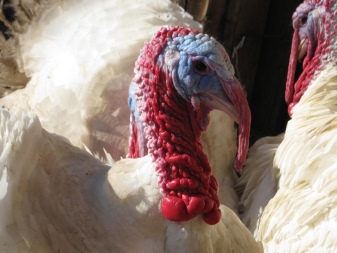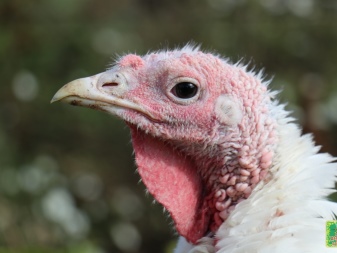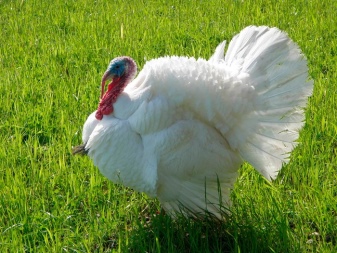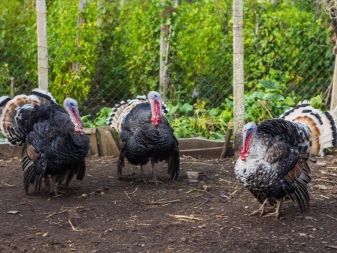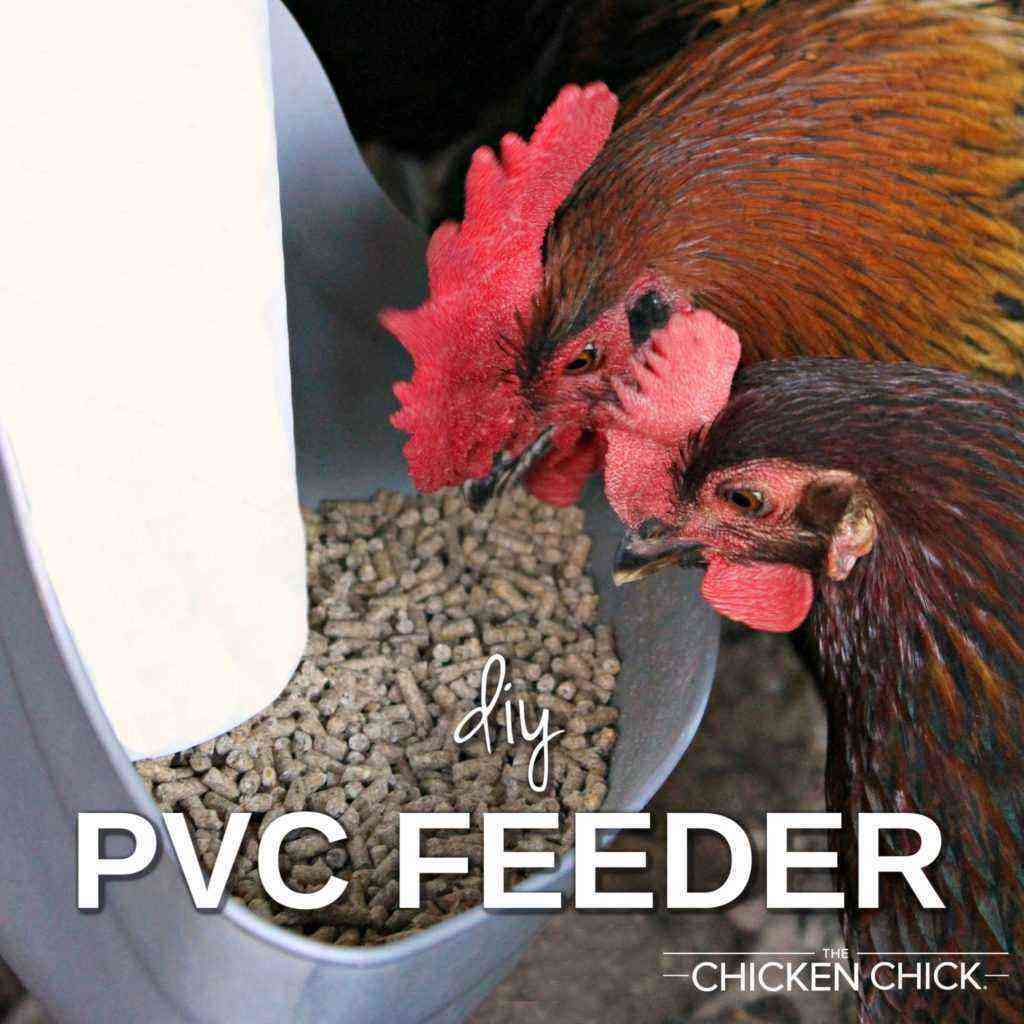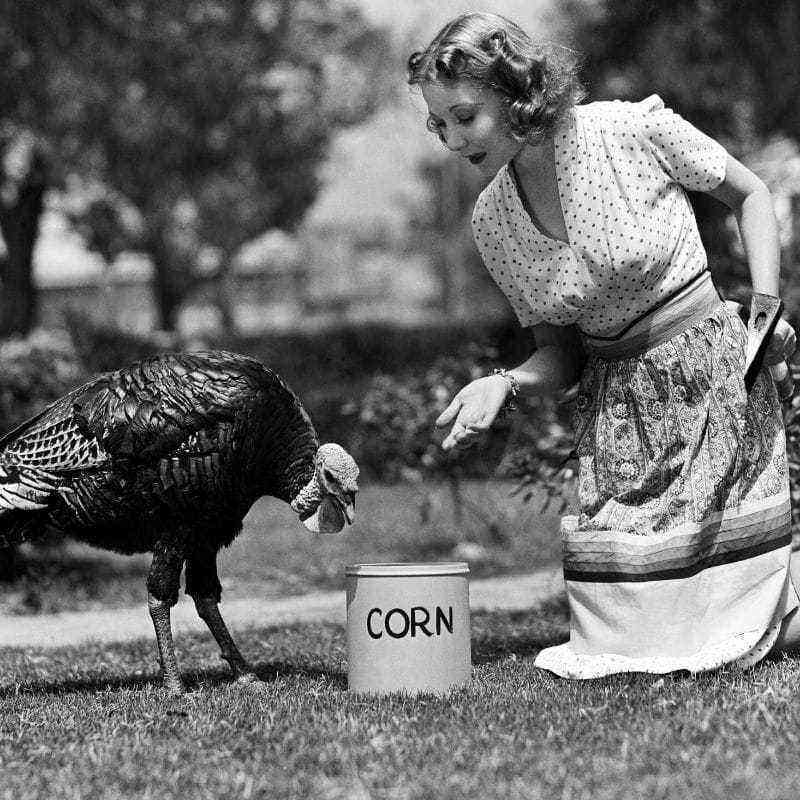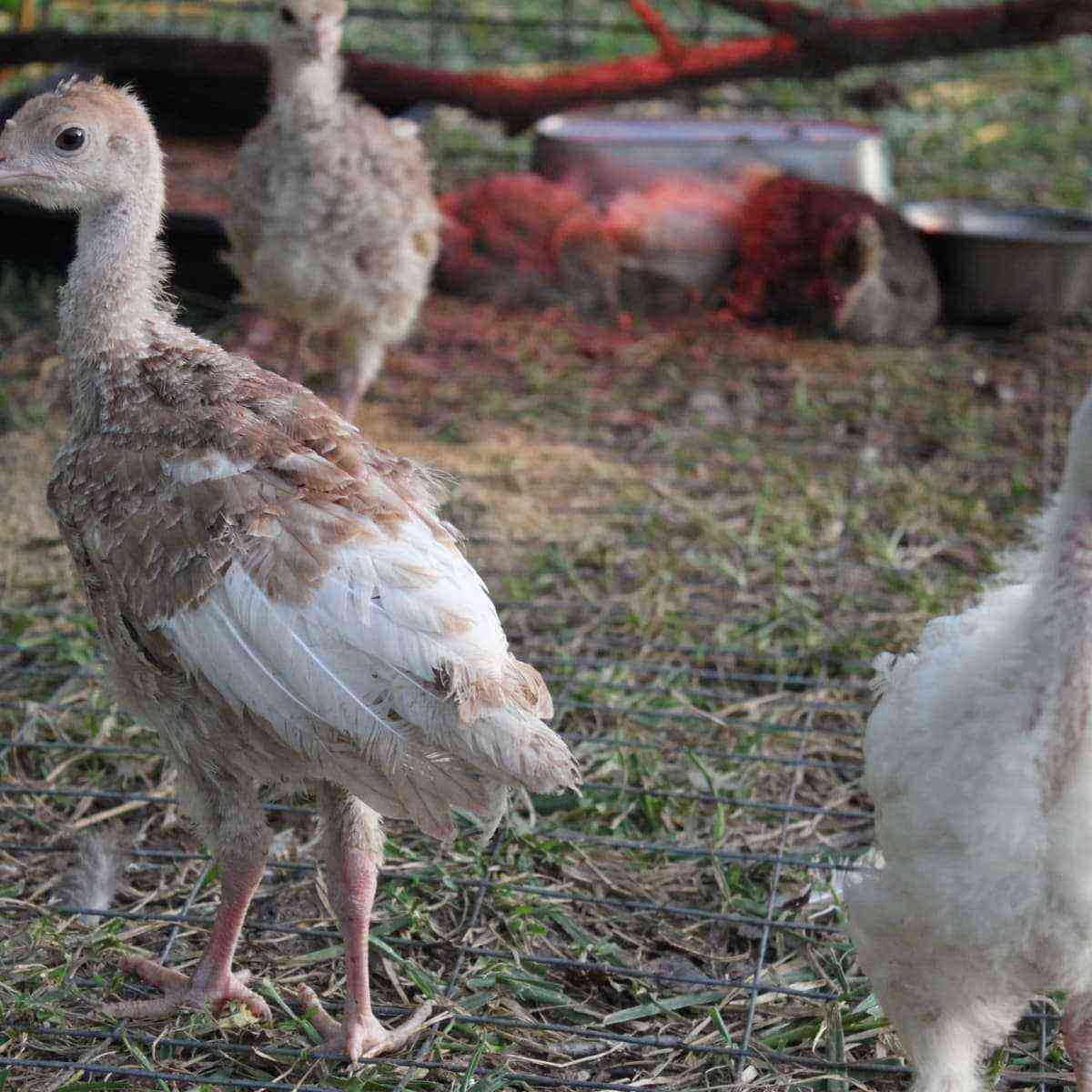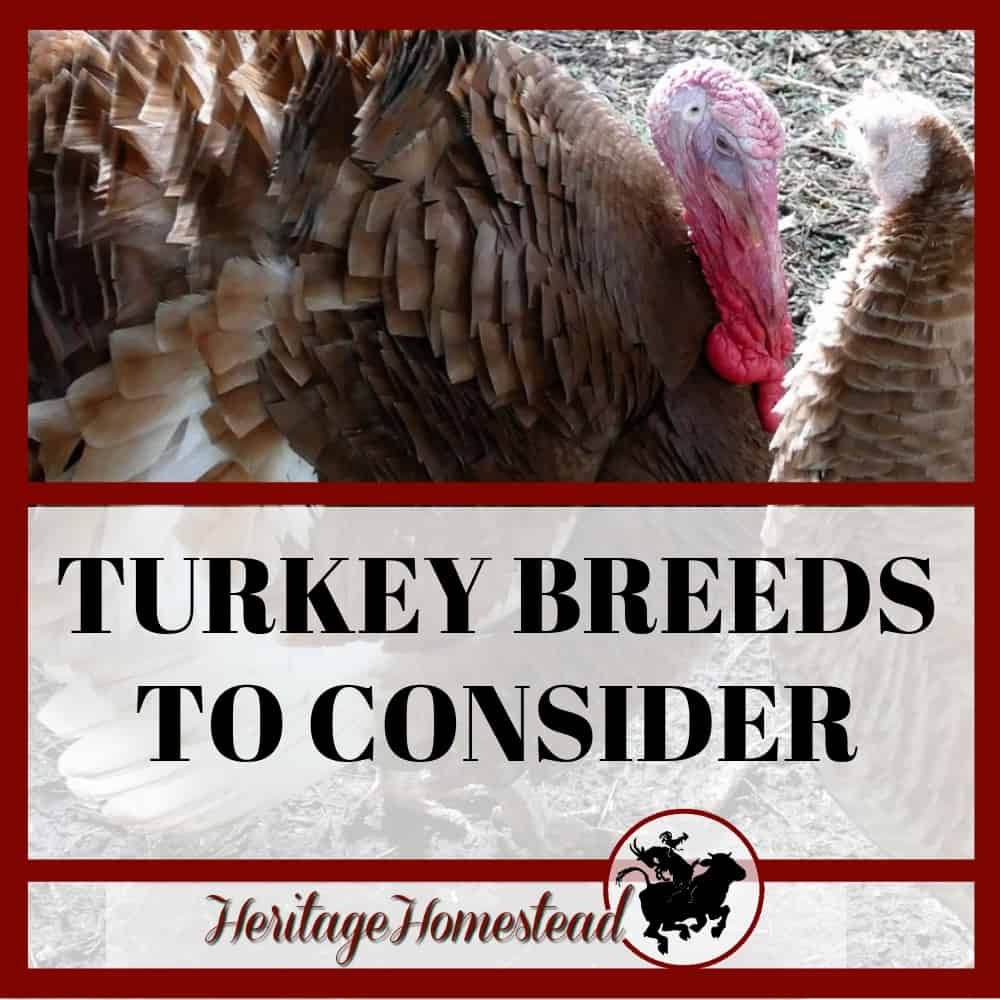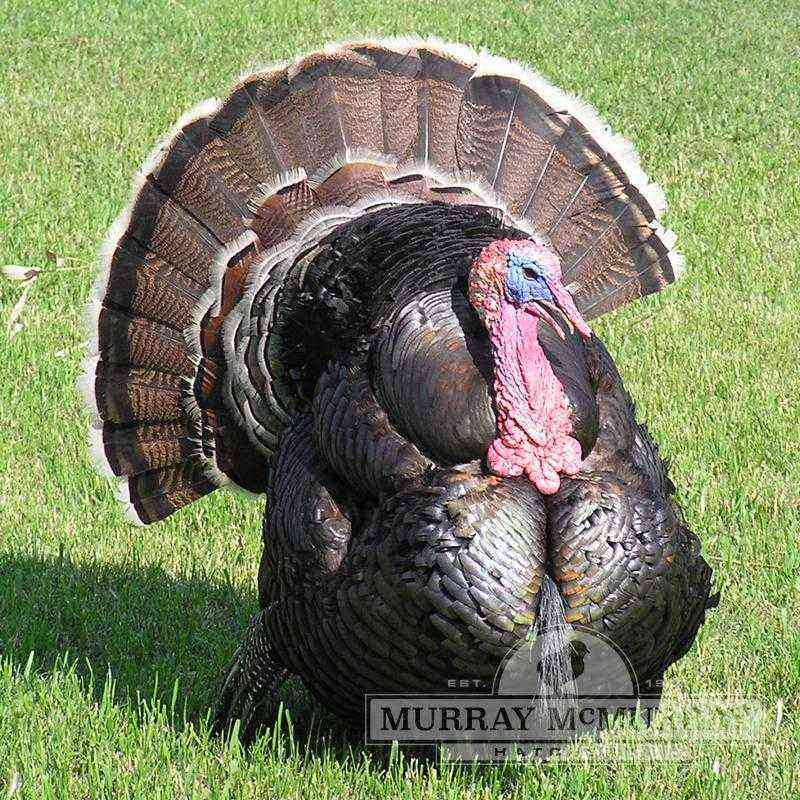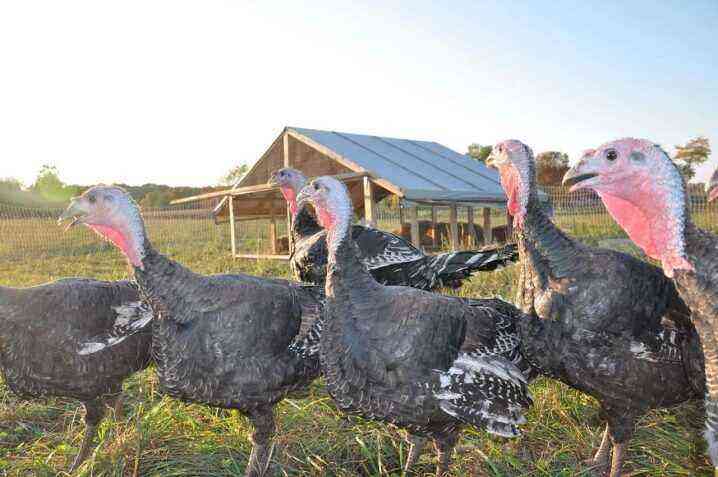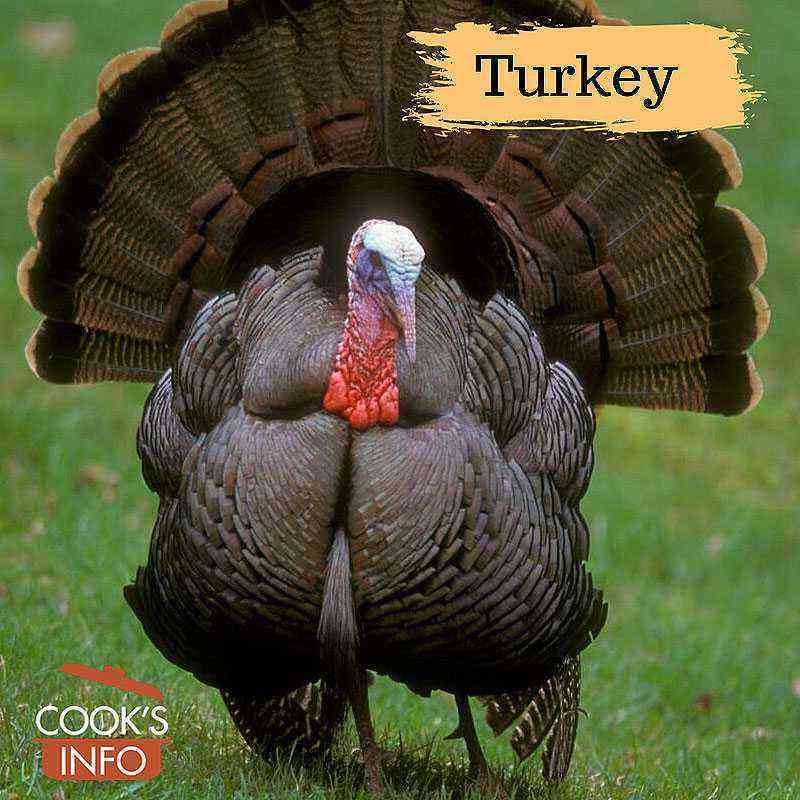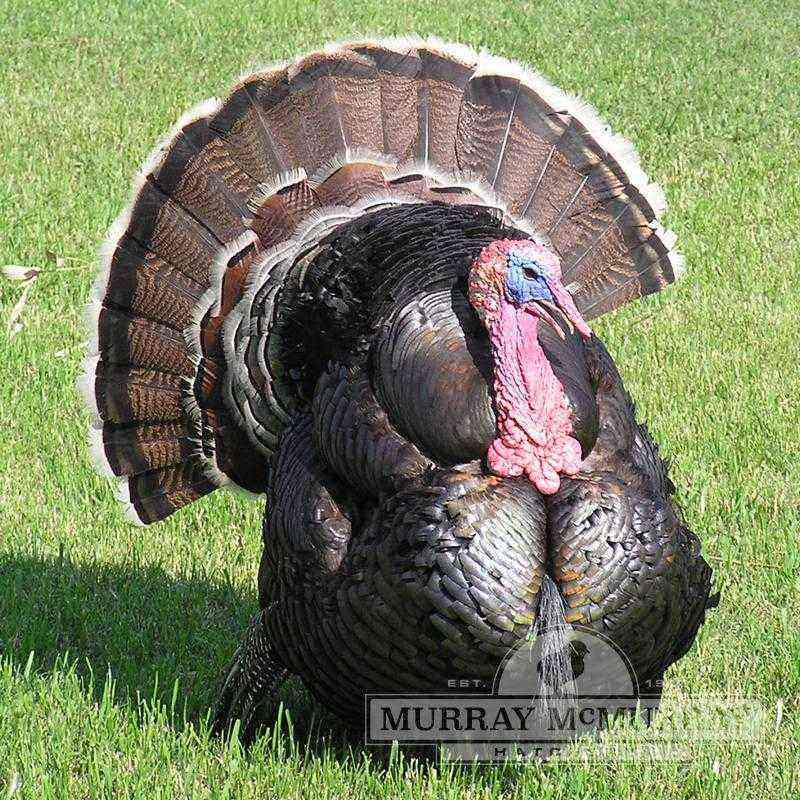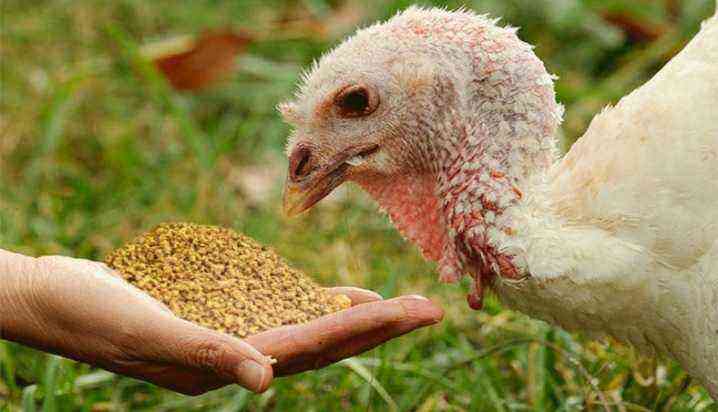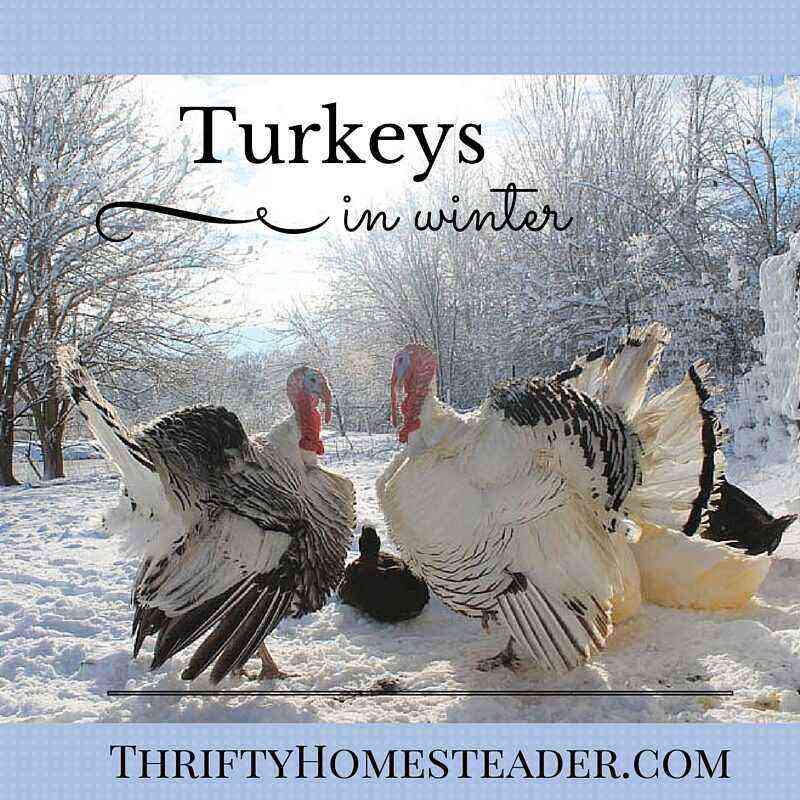With the advent of turkeys in Europe, they were successfully bred for domestic use and for industrial purposes.
Since the birds gained weight fairly quickly and did not need excessive care, they gained great popularity among poultry farmers.
Classification of breeds by purpose
There are many varieties of turkeys, they are of several types according to their intended purpose.
Meat
Meat varieties include a large number of breeds of turkeys. These include broiler species and crosses.
- Broad-chested white breed – quite popular and well-known. Its representatives have a heavy physique with a voluminous breast. The head is bluish in tone with an elongated red outgrowth. The color is white, the chest is decorated with several black feathers. Paws are medium, dark pink. Males weigh 17–22 kg, females up to 10 kg. They develop equally well both in cages and on free range.
- Moscow bronze turkeys have a somewhat elongated body shape and a massive convex breast. The feather cover is a brilliant black-bronze shade. The tail is decorated with bright and dark brown stripes, the edges are bordered with a black stripe with a white frame. The skin of turkeys is black, this feature significantly spoils the appearance of the carcass. Birds are hardy, equally well fed on the range and indoors. Mature turkeys weigh up to 20 kg, and females – 10 kg, the egg production of the breed is 90 eggs.
- Cross Big-6 characterized by high productivity and very fast weight gain. This cross is one of the most productive in the world. The constitution of birds is strong, with a powerful elongated neck and a straight back. Long legs are yellow. The color of the representatives of the cross is white, on the chest there is a dark spot of small sizes. With a relatively small diet, birds grow quite quickly. The average weight is 25 kg for males and 11 kg for females, although mature individuals can weigh up to 2 times more. As a rule, they are not brought to such a weight, since the meat loses its nutritional value and becomes more rigid. During the productive period, the turkey produces up to 100 eggs.
- Hybrid Converter bred in Canada and is one of the most common varieties. Birds belong to precocious, they gain weight very quickly. The ratio of weight and obtained meat products is very high – about 85%. The meat has a very pleasant tender taste. The color of turkeys is white, the tail is distinguished by splendor. The physique of the birds is strong, with a wide chest. Turkeys quickly adapt to new conditions and climate, are undemanding in care. The weight of adult males is over 20 kg, turkeys are half as much. Egg products per year give up to 50 pieces. Females differ in caring for offspring.
- But-8 – the breed is not very popular yet, since it was bred relatively recently. The plumage of the birds is white, rather magnificent, which makes the already large bird even more massive. The neck of representatives of this species is arched, somewhat elongated, the paws are also long. The average weight of males is about 27 kg, females – 10 kg. Egg production – 100 eggs per period.
- Canadian broad-breasted turkey may be white or black with a snow-white stripe along the edges of the feathers on a magnificent tail. The body is strong, with a broad chest, the red hanging chin, when the bird is excited, can inflate up to 20 cm. Males weigh from 15 to 30 kg (depending on age), and females 8–17 kg. One turkey can produce 100 eggs per year, a distinctive feature of the breed is very high breeding rates: up to 93%.
In addition, birds are unpretentious in food and have rather soft meat. Of the minuses of the species, intolerance to cold and drafts can be distinguished.
Egg
Egg breeds are the least common of all species. They are characterized by high egg production, due to their low weight they are not particularly productive in terms of breeding for meat.
- Virgin rock or, as it is also called, Dutch, is a hybrid of white color. Birds are not too big. This breed has a compact body, medium legs and head. Turkeys are undemanding in care and food, but prefer free range. The average weight of males is 9 kg, and females – 4 kg. One turkey produces about 120 eggs a year, she hatches the chicks herself and takes care of them for a long time.
- bronze turkeys quite popular among poultry farmers. The name of the breed was due to the peculiar coloring of plumage. Males have a black color on the upper neck and chest, a dark back has a stripe of a bronze hue. The hips and wings are decorated with white dashes, the tail is large, fan-shaped, with a white border. On a light blue head, growths of red color stand out as a bright spot. The color of females is more modest. The body is compact, neat, the head is without growths. The back, breast and wings have a characteristic white edging. The average weight of males reaches 18 kg, and females 10 kg. A turkey can lay about 100 eggs in a year.
- White Moscow breed has a similar description to Big-6, its representatives also have a white body color with a dark spot on the chest. The difference is mainly in the weight of the birds: Moscow white turkeys weigh about 16 kg, and turkeys – 8 kg. This variety is well suited for breeding in households. Birds are not very demanding in care and quickly adapt to different changes.
- Cross Big-9 It is distinguished by good endurance and unpretentiousness, which is why it has gained immense popularity among farmers. Birds have a dense physique, rounded chest, short limbs and a small head. The feather cover is white. Adult males can weigh from 17 to 20 kg, the female is half that. Egg production is about 120 eggs per year. Due to the high hatchability rates, birds can be very successfully grown in home farmsteads.
- Cross hidon distinguished by white feathers and an elongated red growth on the head. When breeding it, feed costs are small, and weight gain is quite fast. Turkeys weigh an average of 25 kg, the weight of turkeys is half that. The female lays up to 180 eggs per year. A large difference in weight is a significant obstacle to the mating of birds, so artificial insemination is often used. Young growth does not tolerate drafts, dampness and sudden changes in temperature.
- Black Tikhoretskaya well bred both outdoors and indoors. The constitution of birds is strong, rather dense. The plumage is deep black with a bronze sheen. Turkeys weigh up to 10 kg, and females about 5 kg.
Turkeys are capable of producing about 80 eggs, in addition, they are considered good hens and are distinguished by caring for turkeys.
Meat and egg
The meat and egg species include breeds of universal productivity, which have good yields for both meat and egg products. Mixed breeds are characterized by the presence of a small amount of meat, but females are able to produce a sufficient amount of eggs. Representatives of this species are somewhat smaller than broiler individuals, but more unpretentious in content.
- Cross station wagon is a fairly young variety, bred in the North Caucasus, distinguished by white feathers and fast growth. Birds are very hardy and are characterized by a small amount of food consumed. Adult males weigh about 18 kg, and females – 10 kg. Egg production per year is about 70 eggs, the chicks are strong and rarely get sick.
- North Caucasian bronze rock quite common in households and farms. Its representatives have a relatively large size and good adaptability to various conditions of detention. Turkeys gain weight of about 14 kg, and turkeys – 7 kg. The body of the birds is slightly elongated, the chest is wide. The plumage is bronze with a beautiful emerald and golden sheen. The back and tail are more intensely colored, which has dark brown stripes on a matte background. The turkey is significantly different in size from the turkey, in addition, it has growths that are located under the beak. The neck of the female is densely covered with feathers, which cannot be said about the head: there is practically no plumage here. The breast of females is grayish in color, since the feathers along the edges have a white frame. A turkey produces about 80 eggs a year.
- Uzbek fawn the breed is not particularly productive, but has a huge advantage in that its representatives are able to live and raise turkey poults, finding food on their own. They forage on pastures and practically do not need top dressing. This breed has adapted well to the difficult Central Asian climate, and due to its undemanding nature it is quite popular in local farms. The plumage of birds has a beige and brown tone. In weight, turkeys reach 10 kg, and turkeys about 5 kg. Females produce up to 60 eggs annually.
- North Caucasian white the breed belongs to fairly hardy varieties and is characterized by high quality meat. Birds are unpretentious to the conditions of detention and food, they grow quickly. The color of the feathers is white, although individuals of other colors are also found. The body of representatives of this breed is elongated and wide with a voluminous rounded chest, paws of a light fawn tone. Mature males weigh an average of 15 kg, and females – 8 kg, egg production – from 70 to 90 eggs per year.
- Canadian bronze turkeys belong to the not too well-known varieties. The birds adapted well to the cold climate and acquired extreme hardiness. The feather color is reddish-brown with a bronze sheen. Turkeys have a black upper breast, the back is also dark with a bright bronze tint. The tail has brown and reddish stripes, there are also stripes on the thighs and wings, but they are white and rather thin. The color of the growth on the head gradually changes from reddish to white or deep blue. The females are not so brightly colored. They have white edging on their wings, chest and back, and no growths on their heads. Adult males can reach 20-30 kg, and turkeys – 11-15 kg. About 100 eggs are produced per year.
Species depending on their weight indicators
In addition to systematization by purpose, turkeys are also divided by weight.
Lungs
Males are up to 9 kg, and females are about 5 kg. This type is not suitable for breeding indoors and cages. Due to their small size, the birds are very fussy, mobile, and they need pasture for development. This content makes it possible to save the amount of feed, since turkeys find it on their own. Although there are few meat products from these breeds, some varieties have delicate delicacy meat, which is highly valued. The following breeds belong to the light species:
- black Tikhoretskaya;
- bronze (distinguished by high-quality meat, which is appreciated by gourmets);
- virginian;
- north Caucasian silver;
- north Caucasian white.
The lungs also include local varieties of turkeys, which were bred haphazardly and do not belong to any breed. Their plumage can be different: white, black, colored. And also the light type includes several breeds that do not represent a productive value, they are bred as ornamental birds:
- blue or slate;
- red bourbon;
- dwarf white.
average
Breeds of general purpose belong mainly to the middle type. They do not need much care and are characterized by fairly rapid growth. The weight of turkeys reaches 16 kg, and turkeys – up to 7 kg. Females produce up to 100 eggs per year. Medium breeds include:
- white Moscow;
- Uzbek fawn;
- bronze broad-breasted;
- Moscow bronze;
- cross wagon.
This type also includes the recently brought to Russia and not yet very popular cross-grade maker, which is distinguished by fluffy plumage and fairly good productivity.
It was obtained by crossing a white broad-breasted breed with wild steppe turkeys.
Heavy
The heavy type includes broiler meat breeds and crosses. Birds have a rapid weight gain and significant weight, in comparison with light breeds, they look like giants. Male individuals have about 30 kg of weight, and turkeys up to 12 kg. And also such varieties are more demanding on care and conditions of detention. The Big-6 cross has the highest meat yield of any turkey breed.
In addition, laying hens of this hybrid are considered the only representatives of heavy breeds that produce quite a lot of eggs.
Best for home breeding
On a private subsidiary farm, poultry farmers breed turkeys mainly for meat, since the birds grow quickly and have a high meat productivity. Based on these considerations, crosses are the most profitable, among which the Big-6 stands out. Birds are characterized by high productivity, have a large weight, females produce a sufficient amount of high-quality egg products. In addition, turkeys consume a small amount of feed, which is also very beneficial. Other crosses are slightly behind this breed: chiton and But-8, although they differ from other varieties in efficiency.
These breeds are good because at low cost of feed and in a relatively short period of time, you can get a fairly large amount of good quality meat. To start crosses, you need at least minimal experience in poultry farming, since the breeds need to create certain conditions and care. Based on this, breeding crosses is not suitable for everyone. The best option for beginners and those who do not want to spend a lot of time providing the necessary conditions would be local breeds of birds. They are lighter in weight, grow longer, but stand out for their ease of care. In the summer, birds are quite capable of feeding themselves on a free range. Suitable for home breeding:
- Hybrid Converter – Canadian hybrid, very popular due to high meat yield, endurance and quick adaptation to different conditions;
- white Moscow – remarkably adapted for growing in farmsteads;
- Uzbek fawn – does not have too high productivity, but is extremely undemanding: the birds themselves get food for themselves and their offspring;
- North Caucasian birds – unpretentious, grow well, illegible in feed;
- Tikhoretskaya black – is characterized by low demands and free-range content, which significantly saves the amount of feed.
The most unpretentious varieties
Turkeys belong to not too fastidious birds, but still they need to create certain conditions of detention. However, even among them there are breeds that require only a minimum allowance for normal development, while they do not lose their productivity. To grow adults and turkeys, you do not need to make a lot of effort and waste time: they grow quickly, do not get sick, and are undemanding to feed, because they can provide themselves with food on the paddock.
Among them, North Caucasian, white-breasted and bronze are considered unpretentious, and from crosses – station wagon and Hybrid Converter.
Most Popular Breeds
In households, the most common varieties:
- broad-breasted whites, in Russia they are known as Stavropol (or Altai);
- cross Big-6;
- Moscow;
- Uzbek fawn.
For information on which breed of turkeys to choose, see the following video.
